Last updated on March 23rd, 2024 at 12:17 pm
I am sure you must be familiar with a NOT Gate, its Truth Table, Logic symbol, and its working. But do you know, you can build your own NOT Gate on Breadboard? So in this post, you will learn how to make a NOT Gate using a transistor on a Breadboard.
You can also watch the video below for quick reference
Read a similar article: And Gate Using Diodes
What is a NOT gate?
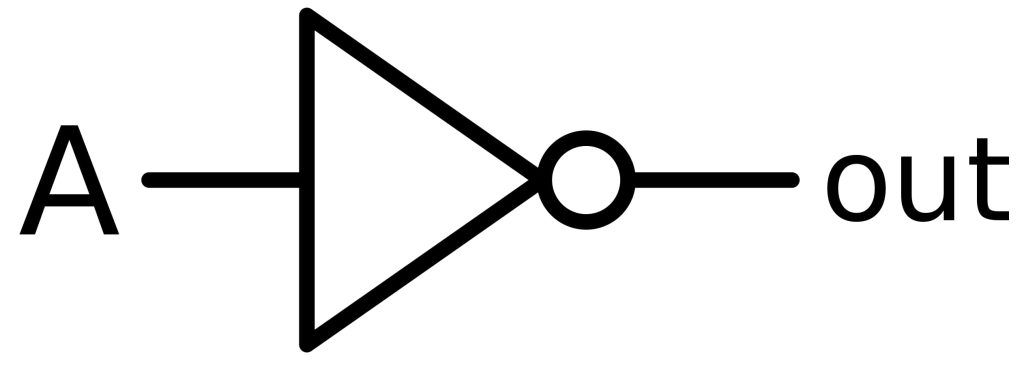
NOT gate is a Logic Gate and is called so because NOT means “Opposite”. There is only one input and one output in a NOT Gate. So when the input is 0, the output is 1, and when the input is 1, the output is 0.
Truth table of a NOT gate
Given below is the truth table of a NOT gate.
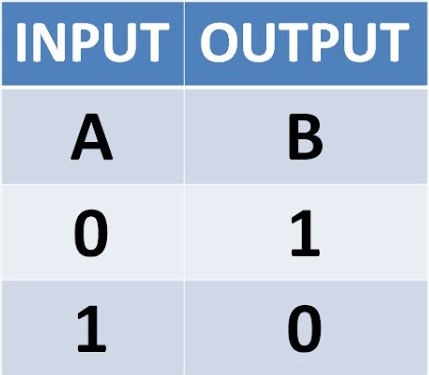
Components required
- BC547 Transistor X 2
- 1k, 100-ohm Resistor
- LED
- 9 Volt Battery
- Connecting Wires
Circuit diagram of a NOT gate using transistor
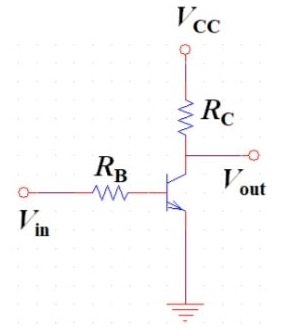
This is the circuit we are going to build on Breadboard.
1. Collector goes to +ve terminal of the battery through Rc = 1k resistor
2. Logic inputs are given to the base of the transistor through an Rb = 100-ohm resistor.
3. Emitter goes to Ground i.e., the -ve terminal of the battery.
4. Output indicator i.e. LED is connected between the collector and emitter(Gnd).
5. Ground- Negative terminal of the battery.
Steps to make a NOT gate on Breadbord
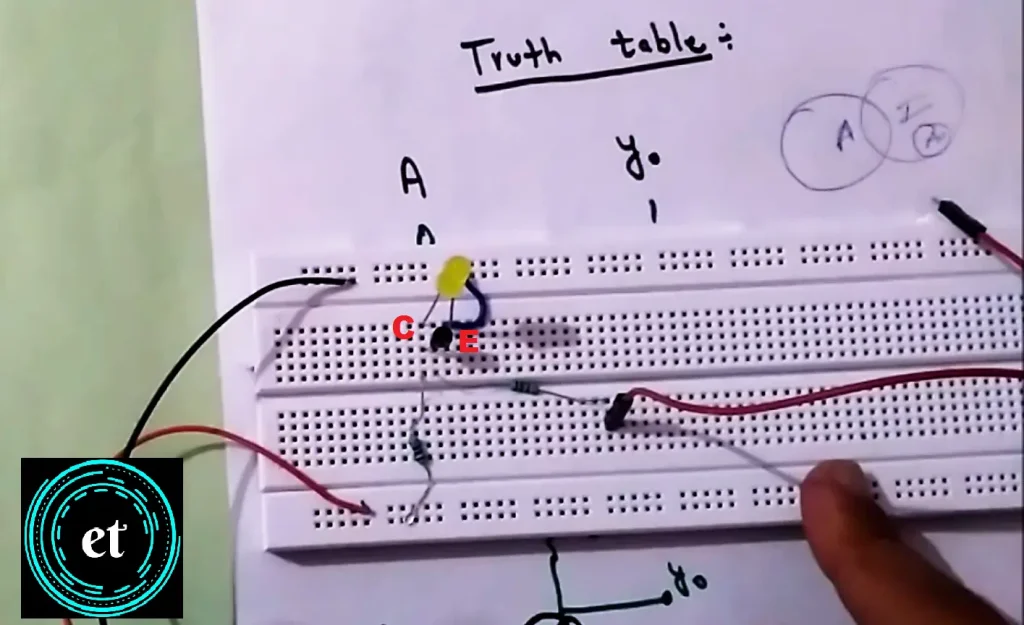
Step 1: Place the transistor on the Breadboard as shown in the figure below. Transistor terminals from left to right: COLLECTOR, BASE, EMITTER.
Step 2: Connect the 100-ohm Resistor from the collector to the +ve terminal of the battery as shown below:
Step 3: Now connect the 1k resistor from the base of the transistor to the input logic.
Step 4: Now connect the jumper wire at input.
Step 5: Connect emitter to Ground i.e, a -ve terminal of battery:
Step 6: Connect terminals of the 9v battery as shown below:
Step 7: Now connect the LED from a collector(longer leg) to the emitter(shorter leg).
Test your NOT gate
BC547 Transistor acts like a switch in this circuit. Whenever there is some threshold voltage at the base, the transistor acts like a closed switch from collector to emitter. Whenever there is no or less voltage, the threshold voltage at the base acts like an open circuit from collector to emitter.
CASE 1: Input A=0, Output=1 (LED is ON)
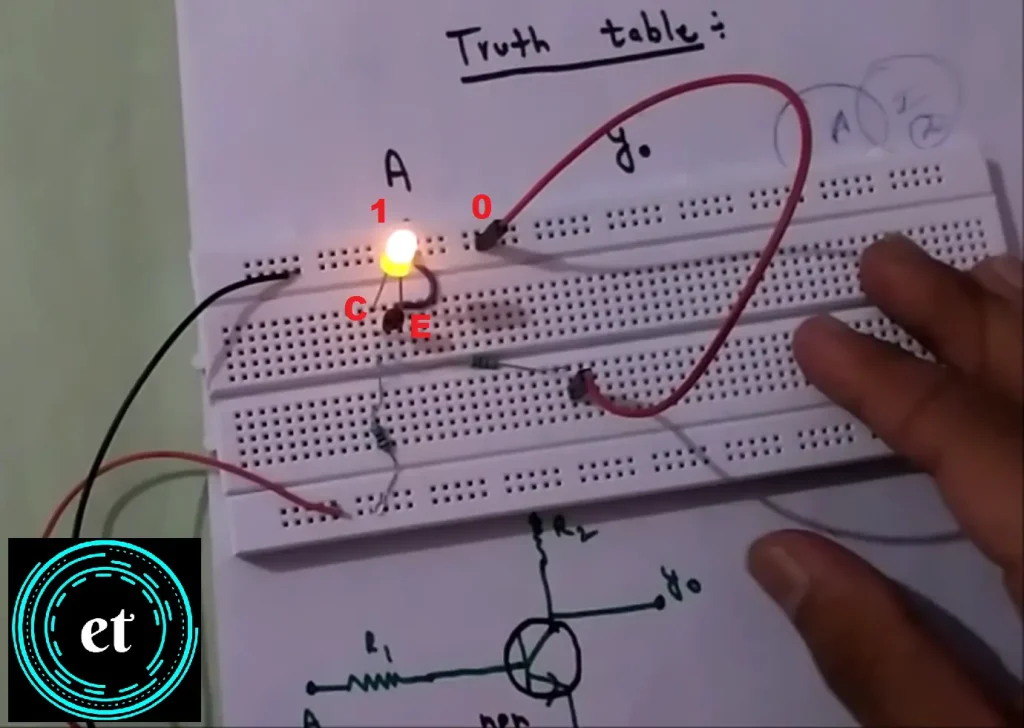
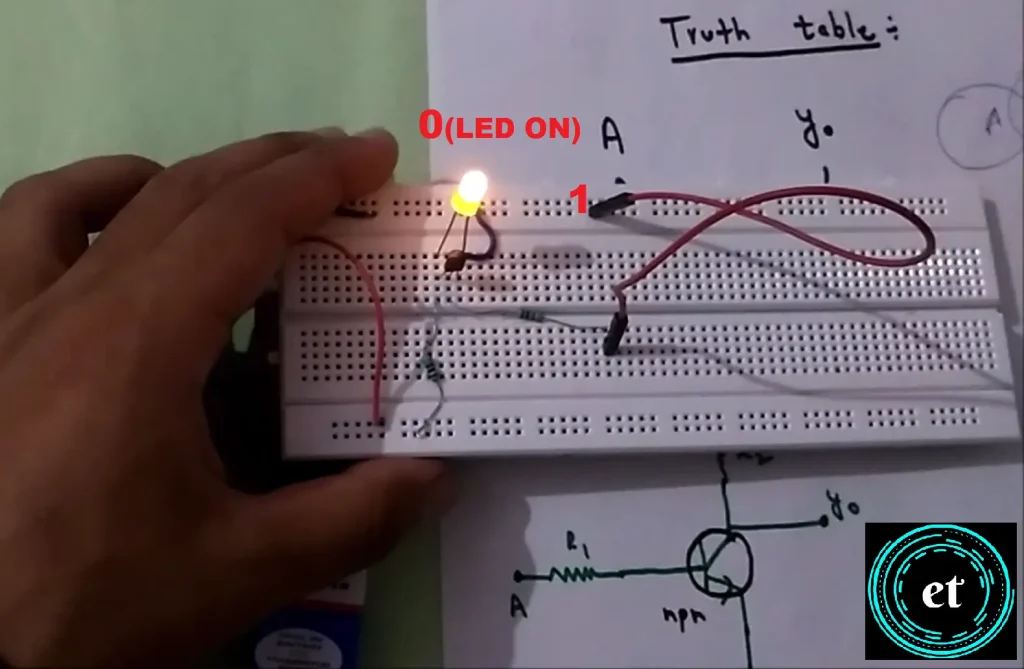
In this case, there is no voltage at the base of the transistor. So it acts like an open switch from collector to emitter i.e. infinite resistance between collector and emitter.
Due to this, no current flows from the collector to the Ground. All current flows from the resistor to the LED and then to the ground i.e. through the path of minimum resistance. Hence LED turns on i.e. 1 at the output.
CASE 2: Input A=1, Output=0 (LED is OFF)


In this case, there is some threshold voltage at the base of the transistor. So it acts like a closed switch from collector to emitter i.e. almost zero resistance between collector and emitter.
Due to this, no current flows from the resistor to the LED and then to the ground. All current flows from collector to Ground i.e. through the path of minimum resistance. Hence LED turns off i.e. 0 at the output.
Hence we get 0(LED is off) at the output when input is 1 and 1(LED is ON) at the output when input is 0.
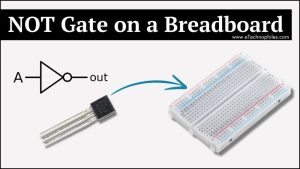

how can I make pnp transistor by using NOT gate
thanks for clear explanation